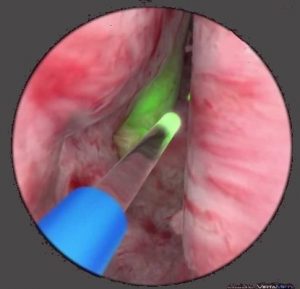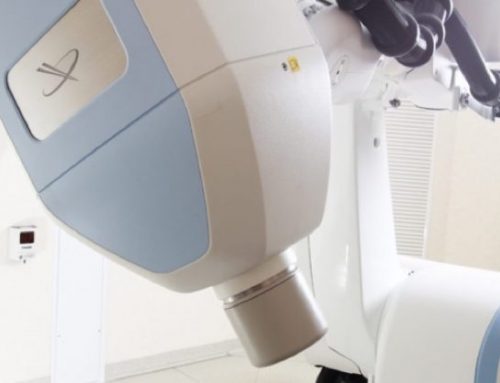INTERNATIONAL SPOTLIGHT ON THE SCIENTIFIC EXCELLENCE OF HUMANITAS’ UROLOGY DEPARTMENT

A new study, presented by Dr Paolo Casale, Head of the Department of Urology at Humanitas Research Hospital, at the 2023 American Urological Association (AUA) Meeting, – one of the most important event in the field of Urology held recently in Chicago, – highlights that robot-assisted radical prostatectomy aids in the crucial stages of the procedure for patients with less aggressive tumors and enhances surgical precision, reduces blood loss and transfusion rates, and shortens hospitalization time.
We have entered the third decade of the robotic era in prostate cancer surgery, and robotic platforms are becoming increasingly common worldwide. According to a new study, presented by Dr Paolo Casale, Head of the Department of Urology at Humanitas Research Hospital, at the 2023 American Urological Association (AUA) Meeting, – one of the most important event in the field of Urology held recently in Chicago, – robot-assisted radical prostatectomy aids in the crucial stages of the procedure for patients with less aggressive tumors and enhances surgical precision, reduces blood loss and transfusion rates, and shortens hospitalization time. Moreover, it optimizes the probability of favorable functional outcomes, particularly in terms of continence and erectile function recovery compared to conventional laparoscopic surgery.
The incidence of prostate cancer increases progressively with age: it doubles with each decade of age, from 10% in men aged 50 to 70% in the eighties. While the factors that contribute to the development of prostate cancer are not fully understood, genetics, environment and dietary factors, such as a high calorie diet, are implicated.
Humanitas has been exploring minimally invasive treatments for prostate cancer since the 1990s, beginning with laparoscopic surgery. The Institute’s adoption of robotic treatment marks a significant milestone in surgical techniques. As a result, Humanitas has discontinued the use of laparoscopy. Since 2006, its surgeons have successfully carried out over 1100 interventions of robotic radical prostatectomy.
Robotic surgery: the most promising approach for less aggressive tumors
Robotic surgery is the most promising approach for patients with less aggressive tumors as it seeks to achieve full functional recovery, including urinary continence and sexual potency. The benefits of this procedure are directly related to the quality of the robotic system. The “da Vinci” robot at Humanitas is a cutting-edge surgical system, boasting 3D high-definition vision and four mechanical arms.
The system consists of two integrated parts: the control panel (console) and the surgical cart, which sits next to the patient. The surgeon, seated at the console, is able to manipulate the robotic equipment, enabling fast and precise switching between the functions of the mechanical arms. The surgical cart transmits the surgeon’s movements to the arms, which are fitted with specific surgical tools. The “da Vinci” robot presents another advantage in the form of 3D vision, which affords the surgeon a deeper field of view, superior image magnification, and an exceptionally steady view of the surgical area.
The Humanitas urology team, with several areas of expertise, specializes in the “HoLEP” technique for treating benign prostatic hyperplasia. The use of the Holmium laser offers an advantage in clearing blockages in even the largest prostates, reducing blood loss, pain, and post-operative hospitalization.
Ultrasound, PET and CT scan: new diagnostic features
At the AUA Meeting the Humanitas’ team presented no less than twenty different scientific studies, focused on the diagnosis and treatment of prostate cancer, testifying to the high scientific and clinical level of Humanitas in this field.
Some studies on a high-resolution ultrasound (MicroUS Exact VU), successfully used at Humanitas in many patients, have been presented and they have allowed to demonstrate the validity of this tool both in the diagnosis-in guiding lesions detection during prostate biopsy- and in the evaluation of the tumor extension beyond the prostate capsule (extracapsular extension). The use of this ultrasound is useful for personalized treatment, aimed at achieving oncological success by minimizing the risk of post-surgical side effects, such as erectile dysfunction.
Among the other innovations, a diagnostic technique of Nuclear Medicine (the PET-PSMA: PET – Positron emission tomography) that, through the administration of a radiopharmaceutical (the molecule PSMA) and the subsequent acquisition of images, provides accurate and detailed information about organs and tissues during the follow up, after focal treatment for prostate cancer (high frequency ultrasound waves, precise and focused, to target and destroy cancer tissue).
Whit more than 2,250 experts including doctors, scientific researchers and staff, and 45,000 patients admitted each year, Humanitas is a highly specialized hospital, research and teaching center for the prevention and treatment of cancer, cardiovascular, neurological and orthopedic disease – together with an Ophthalmic Center and a Fertility Center.



 Humanitas is a highly specialized teaching and research hospital.
Humanitas is a highly specialized teaching and research hospital.  Dr Paolo Casale is Head of the Operative Unit of Urology. He has extensive experience in the surgical treatment of oncological and functional pathologies of the kidney, bladder and prostate.
Dr Paolo Casale is Head of the Operative Unit of Urology. He has extensive experience in the surgical treatment of oncological and functional pathologies of the kidney, bladder and prostate.  The International Department of Humanitas Research Hospital has helped over 20.000 people from over 150 nations to receive exceptional medical care, offered by world-level doctors that use state-of-the-art technology and follow the latest care protocols. The goal of the Department is to ensure that international patients have comfortable and stress-free stay at our Hospital. To this end, we offer continued organizational, language, and psychological support and provide interpreters, night nurses, remote 24h translation services, medical reports in patients’ native languages, and other services, which facilitate our patients’ treatment and recovery.
The International Department of Humanitas Research Hospital has helped over 20.000 people from over 150 nations to receive exceptional medical care, offered by world-level doctors that use state-of-the-art technology and follow the latest care protocols. The goal of the Department is to ensure that international patients have comfortable and stress-free stay at our Hospital. To this end, we offer continued organizational, language, and psychological support and provide interpreters, night nurses, remote 24h translation services, medical reports in patients’ native languages, and other services, which facilitate our patients’ treatment and recovery. This technique consists of administering anesthesia to the patient (usually spinal i.e. without the need to completely numb the patient) and introducing a thin instrument that contains an optical fiber for vision and the Holmium laser fiber.
This technique consists of administering anesthesia to the patient (usually spinal i.e. without the need to completely numb the patient) and introducing a thin instrument that contains an optical fiber for vision and the Holmium laser fiber.